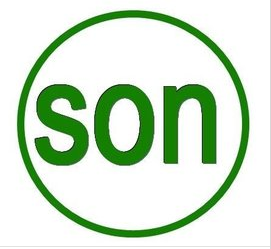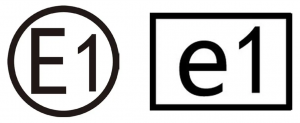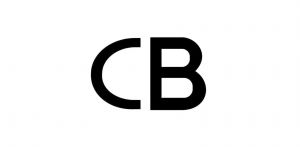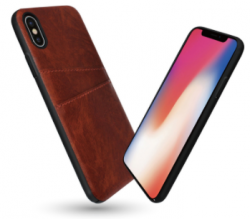FDA
FDA approval
The Food and Drug Administration (FDA) is one of the executive agencies established by the United States government within the Department of Health and Human Services (DHHS) and the Department of Public Health (PHS). As a scientific regulatory agency, FDA is responsible for ensuring the safety of foods, cosmetics, drugs, biologics, medical devices, and radiological products manufactured or imported into the United States. It was one of the first federal agencies to have consumer protection as its primary function.
FDA introduction and composition
This institution touches the lives of every American citizen. Internationally, FDA is recognized as one of the largest food and drug regulatory agencies in the world. Many other countries promote and monitor the safety of their own products by seeking and receiving FDA assistance.
The Director of the Food and Drug Administration (FDA) : supervision and inspection of foods, drugs (including veterinary drugs), medical devices, food additives, cosmetics, animal foods and drugs, wine beverages with an alcohol content of less than 7%, and electronic products; It also includes cosmetics, radiation products, combination products and other electronic products and medical products related to personal health and safety. Testing, inspection and certification of ionic and non-ionic radiation produced during the use or consumption of products affecting human health and safety. According to the regulations, the above products must be tested by the FDA to prove safe before they can be sold on the market. The FDA has the power to inspect manufacturers and prosecute violators. According to the different product range regulated, it can be divided into the following main regulatory bodies:
1. Center for Food Safety and Practical Nutrition (CFSAN):
The center has the largest workload at the FDA. It is responsible for food safety throughout the United States except for meat, poultry and eggs, which are regulated by the United States Department of Agriculture. Although the United States has one of the safest food supplies in the world, about 76 million foodborne illnesses occur each year, 325,000 people need to be hospitalized for foodborne illnesses, and about 5,000 people die from foodborne illnesses. The Center for Food Safety and Nutrition works to reduce foodborne illness and promote food safety. And promote various programs, such as: HACCP program promotion and implementation.
The functions of the Centre include: ensuring the safety of substances and pigments added to food; Ensuring the safety of foods and ingredients developed through bioprocesses; Responsible for the management of the correct labelling of food products (e.g. ingredients, nutritional health claims) and cosmetics; Develop policies and regulations governing dietary supplements, infant food formulations and medical foods; Ensure the safety of cosmetic ingredients and products and ensure proper labeling; Supervise and regulate the after-sale behavior of the food industry; Conduct consumer education and behavior development; Cooperative projects with state and local governments; Coordinate international food standards and safety, etc.
2. Center for Drug Evaluation and Research (CDER):
The center aims to ensure the safety and effectiveness of prescription and over-the-counter drugs, evaluate new drugs before they are marketed, and monitor more than 10,000 drugs on the market to ensure that products meet the highest standards, which are constantly updated. The center also monitors the authenticity of advertisements for drugs on television, radio and in print. Strictly monitor drugs and provide consumers with accurate and safe information.
3, Equipment Safety and Radiation Protection Health Center (CDRH):
The center ensures the safety and effectiveness of newly marketed medical devices. That's because more than 20,000 companies around the world make more than 80,000 medical devices of all types, from blood sugar monitors to artificial heart valves. These products are closely related to people's lives, so the center also oversees after-sales service across the country. The center has also established safety standards for products that produce radiation, such as microwave ovens, television sets and mobile phones.
4. Center for Biologics Evaluation and Research (CBER):
The center oversees biologics that prevent and treat disease, and is therefore more complex than chemical-complex drugs, including scientific research into the safety and effectiveness of blood, plasma, vaccines and more.
5. Veterinary Drug Center (CVM):
FDA Certification Introduction
Food FDA approval
FDA's regulatory agency for food, agricultural products, and seafood is the Center for Food Safety and Nutrition (CFASAN), whose responsibility is to ensure that the food supply for Americans is safe, clean, fresh, and clearly labeled.
The Centre supervises US $240 billion of food imports annually, of which 15 billion are imported. The Centre's main monitoring priorities include:
1. Food freshness; 2, food additives; 3. Food biotoxins and other harmful ingredients; 4. Seafood safety analysis; 5, food identification; 6. Tracking and warning of food after listing
According to the anti-terrorism Act passed by the U.S. Congress in 2003, food companies outside the United States must register with the FDA before exporting to the United States and notify the FDA of shipment at the time of export.
The following foreign food production and processing enterprises are required to register with the FDA under U.S. Public Law 107-188:
1. Alcohol and alcoholic beverages;
2. Baby and child food;
3. Bread and pastries;
4. Drink;
5. Candy (including chewing gum);
6. Cereals and ready-to-eat cereals;
7. Cheese and cheese products;
8, chocolate and cocoa food;
9. Coffee and tea products;
10, food coloring;
11, weight loss conventional food and medicinal food, meat substitutes;
12, supplementary food (i.e. domestic health food, vitamins and Chinese herbal products);
13 Condiments;
14. Fish and seafood;
15 Placing materials and products in direct contact with food;
16. Ingredients and safe ingredients;
17, food sugar substitute;
18. Fruits and fruit products;
19, edible glue, milk enzyme, pudding and filling;
20, ice cream and related food;
21, imitation milk products;
22. Macaroni and noodles;
23. Meat, meat products and poultry products;
24. Milk, butter and dry dairy products;
25, dinner food and marinades, sauces and specialty products;
26, dried fruits and nuts;
27. Eggs and egg products in shell;
28, snacks (flour, meat and vegetables);
29, pepper, special taste and salt;
30. Soup;
31. Soft drinks and canned water;
32. Vegetables and vegetable products;
33. Vegetable oil (including olive oil);
34, vegetable protein products (square meat food);
35, whole grain food and flour processing food, starch, etc.;
36. Products primarily or wholly intended for human consumption;
Medical device FDA certification
FDA regulates medical devices through the Center for Devices and Radiological Health (CDRH), which monitors the manufacturing, packaging, and distribution of medical devices in compliance with the law.
A wide range of medical devices, as small as medical gloves, as large as cardiac pacemaker, are under FDA supervision, according to medical use and possible harm to the human body, FDA medical devices are divided into Ⅰ, Ⅱ, III classes, the higher the category supervision more.
If the product is a novel invention that does not exist on the market, the FDA requires that the manufacturer conduct rigorous human testing and that there is compelling medical and statistical evidence of the product's effectiveness and safety.
FDA certification of medical devices, including: manufacturer registration in FDA, FDA registration of products, product listing registration (510 form registration), product listing review and approval (PMA audit) of medical devices label and technical transformation, customs clearance, registration, pre-market report, must submit the following materials: (1) Package five complete finished products,(2) structure diagram and text description of the device,(3) performance and working principle of the device; (4) Safety demonstration or test materials of the device,(5) introduction to the manufacturing process,(6) summary of clinical trials,(7) product description. If the device has radioactive energy or releases radioactive material, it must be described in detail.
Factory and product registration of medical devices
The FDA has a clear and strict definition of a medical device, which is defined as follows: "A medical device means an instrument, device, tool, machine, appliance, insert tube, in vitro reagent, and other related articles, including components, parts, or accessories, that meets the following conditions: Expressly listed in the National Formulary or the Unite States Pharmacopeia or in an appendix to both; Intended for use in the diagnosis of animal or human diseases or other physical conditions, or for the cure, mitigation or treatment of diseases; One that is intended to affect the function or structure of an animal or human body, but does not achieve its primary purpose through metabolism."
Only products that meet the above definition are considered medical devices, under this definition, not only various instruments and tools in hospitals, but also fitness equipment such as eyeglass frames, eye lenses, toothbrushes and massagers that consumers can buy in general stores are within the scope of FDA management. It is slightly different from the domestic recognition of medical devices.
According to the different risk levels, the FDA divides medical devices into three categories (I, II, III), with Class III having the highest risk level. The FDA will each medical device has clearly defined its product classification and management requirements, and there are more than 1,700 FDA medical device product catalogs. If any medical device wants to enter the U.S. market, it must first clarify the classification and management requirements of the products applied for listing.
FDA has made many bills for medical devices, and from time to time to modify and supplement, but there are not many fundamental bills, mainly including: the Federal Food, Drug and Cosmetic Act (FD&C Act, the fundamental Act); Public Health Service Act; Fair Packaging and Labeling Act; Health and Safety Radiation Control Act; Safe Medical Devices Act; The Modernization Act. For these acts, the FDA has given a very detailed explanation, and there are specific operational requirements. Before planning to enter the U.S. market, companies need to carefully evaluate the regulations and specific requirements related to their products (including different U.S. product standards requirements).
After clarifying the above information, the enterprise can begin to prepare the relevant declaration information, and according to certain procedures to the FDA to obtain approval. For any product, the company needs to perform a business Registration and product Listing. For Class I products (accounting for about 47%), the implementation of General Control (General Control), the vast majority of products only need to register, list and implement GMP specifications, products can enter the US market (very few products even GMP exemption, A very small number of reserved products are required to submit a 510(K) application to the FDA (Premarket Notification); For Class II products (about 46%), the implementation of Special Control (Special Control), enterprises after registration and listing, but also need to implement GMP and submit 510(K) application (very few products are 510(K) exemption); For Class III products (accounting for about 7%), the implementation of pre-market licensing, the enterprise after registration and listing, must implement GMP and submit to the FDA PMA(Premarket Application) application (some Class III products or PMN).
For Class I products, after the enterprise submits the relevant information to the FDA, the FDA only makes an announcement, and there is no relevant certificate to issue to the enterprise; For class II and III devices, companies must submit PMN or PMA, and at the same time, the FDA will give companies a formal market access approval letter (Clearance), that is, allow companies to directly sell their products in the U.S. medical device market in their own name. As for whether to conduct on-site GMP assessment in the application process, it is determined by the FDA based on a combination of factors such as product risk level, management requirements and market feedback.
It can be seen from the above that the vast majority of products can be approved by FDA after enterprise registration, product listing and GMP implementation, or after submitting a 510(K) application.
The 1.510 (K) document is also the document required by FDA for PMN and is commonly referred to as the 510(K) document because of its corresponding Section 510 of the FD&C Act.
2. Substantial equality comparison (SE)
3.510 (K) Review procedures
Before the application, it must be clear whether the product is recognized by the FDA as a medical device, product category, management requirements, and clear application work content;
Check whether the products applied for listing have mandatory standards in the United States, and whether the products meet the standards (generally require a formal inspection report from a testing agency);
Before preparing a 510(K) application, consider whether, when, and what type of 510(K) application you really need to file: regular 510(K), special 510(K), simplified 510(K);
Provide timely written and timely answers to questions raised by FDA during the application process;
All documents submitted to FDA should be in Letter Size(21.5cm x 29.7cm).
All data submitted to the FDA need to keep a backup, because the FDA will electronically scan and log in after receiving the application data, and destroy the application data, and do not return the enterprise.
For a small number of products, FDA will conduct on-site GMP assessment of the enterprise, the enterprise must refer to the US GMP management requirements, and in the FDA on-site audit with appropriate translators who have a certain understanding of GMP and the enterprise;
The official contact person who informs the FDA must have a certain understanding of FDA regulations and working procedures, and can communicate directly with the FDA to facilitate timely feedback, and the company can specify itself or entrust a consulting agency to be responsible for daily communication with the FDA.
Cosmetic FDA certification
Voluntary Registration Scheme for Cosmetics (VCRP)
FDA's Office of Cosmetics and Colorants has developed a voluntary registration program for cosmetics at the request of the cosmetics industry. The scheme consists of two parts: voluntary registration of cosmetic manufacturers and declaration of cosmetic ingredients.
Benefits of participating in VCRP
A manufacturer's voluntary registration and obtaining a registration number does not indicate FDA's approval of the manufacturer or its products, nor does FDA permit manufacturers to use the registration number or listing number obtained by participating in VCRP or for commercial promotion; However, manufacturers can directly gain the following benefits by participating in VCRP:
Get important information about cosmetic ingredients. The FDA enters all the information it receives from the VCRP into a computer database. If a cosmetic ingredient currently in use is deemed to be harmful and should be banned, FDA notifies the manufacturer or seller of the product via an address book in the VCRP database. If your product is not in the registry database, the FDA will not be able to notify you.
Avoid being detained when products are recalled or imported due to ingredients. If a cosmetic manufacturer files a formula with the VCRP, the FDA will alert the manufacturer if it finds that the manufacturer has used an unapproved color additive or other prohibited ingredient in the formula. This allows manufacturers to modify product formulations before they are imported or sold, eliminating the risk of product recalls or seizures due to improper ingredient use. Help retailers identify safety conscious

 English
English
 中文
中文










